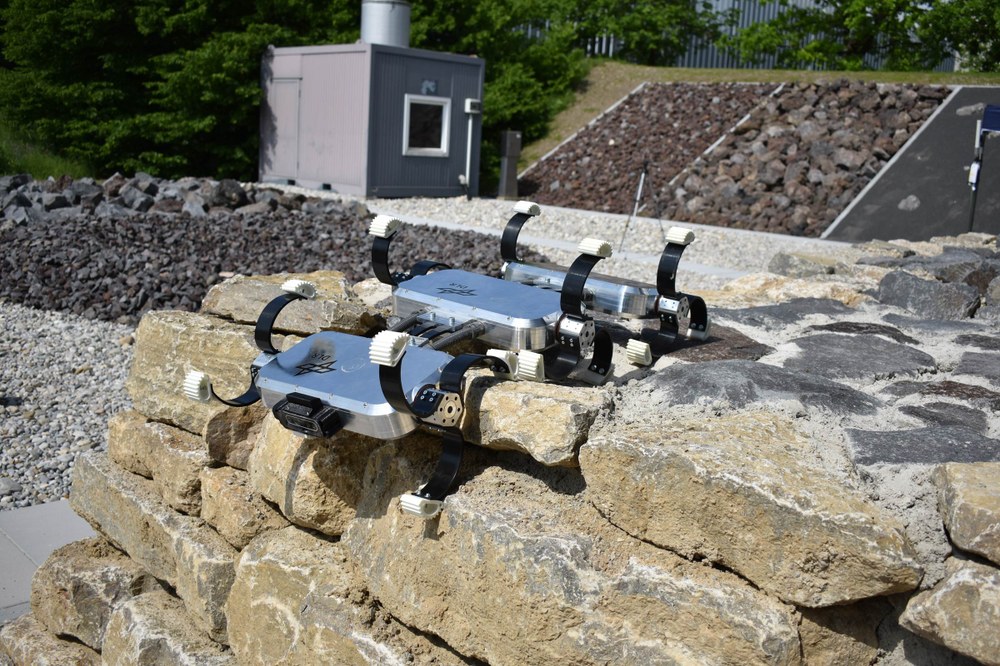Scout Rover
Overcoming rough terrain is still a challenging task for mobile robots. In terrestrial applications, the focus is usually on "search and rescue" scenarios with highly unstructured ground or even collapsed buildings. The solution for such scenarios is usually a leg-driven system. However, these very agile systems have the disadvantage of high mechatronic complexity and require high computing power. Especially in planetary exploration, these disadvantages mean that these systems cannot be realised in current and near-future missions.
The DLR "Scout" rover therefore uses a novel, flexible spoked wheel and deformable back elements to overcome obstacles. It has only one fully rotational drive per wheel. Together with the compliant elements, this enables energy-efficient, dynamic and, above all, robust locomotion in the toughest terrain.the aim of the Scout Rover is to explore previously inaccessible areas such as crater walls and caves on foreign planets. The system not only overcomes hard, rocky obstacles but also "paddles" through extremely soft sand pits where wheel-driven systems would fail. For the exploration of caves on Mars and the Moon, the DLR team is working closely with cave explorers on Earth to adapt the system to the special conditions and high demands of this terrain in the best possible way. On Earth, the robust system can be used, for example, to support the rescue of buried persons or in agricultural robotics, and for the Institute of System Dynamics and Control, the system's modularity enables the verification of optimisation calculations and simulations as well as the testing of innovative control approaches for electromobility on other planets and our own.

Mars Rover "Scout" during test run on the DLR test field
Your consent to the storage of data ('cookies') is required for the playback of this video on Youtube.com. You can view and change your current data storage settings at any time under privacy.
Features of the system:
- Lightweight construction for total mass of ~18 kg
- >6 kg payload capacity with >5.0 l payload volume
- Locomotion based on compliant "rimless wheels"
- Maximum speed ~1.7 m/s
- Height of obstacles that can be overcome >250 mm
Robustness:
- Survives falls from >1.5 m height
- Fault-tolerant against motor failures and mechanical failure
- Simple intelligent design: 6 motors for 6 wheels
- Upside-down travel possible
- Phase offset of the wheels according to bionic model
Efficiency:
- Battery life ~4 hours
- Passively compliant elements store energy and actively support locomotion
Tasks:
- Exploration of caves on Mars and the moon
- Searching for life in extraterrestrial caves and testing habitability
- Transporting payloads to dangerous areas
- Search & Rescue
- Sampling soils at limited depths
- Scouting for larger rovers or additional module for stationary landers
- Terrestrial applications: Research, search & rescue, agricultural robotics, cave rescue
Further information:
https://lpsc2021.ipostersessions.com/default.aspx?s=8A-BF-3E-9C-8B-4F-FA-20-49-08-61-64-4E-BB-FD-E2#
Mission outline:

